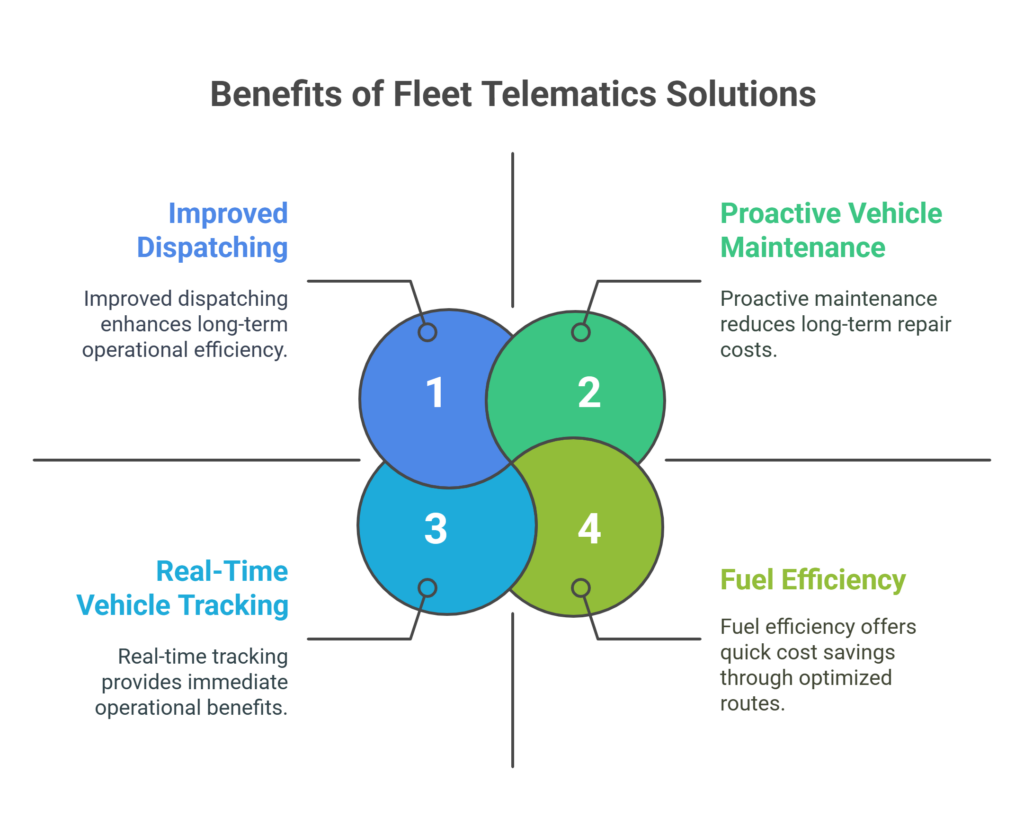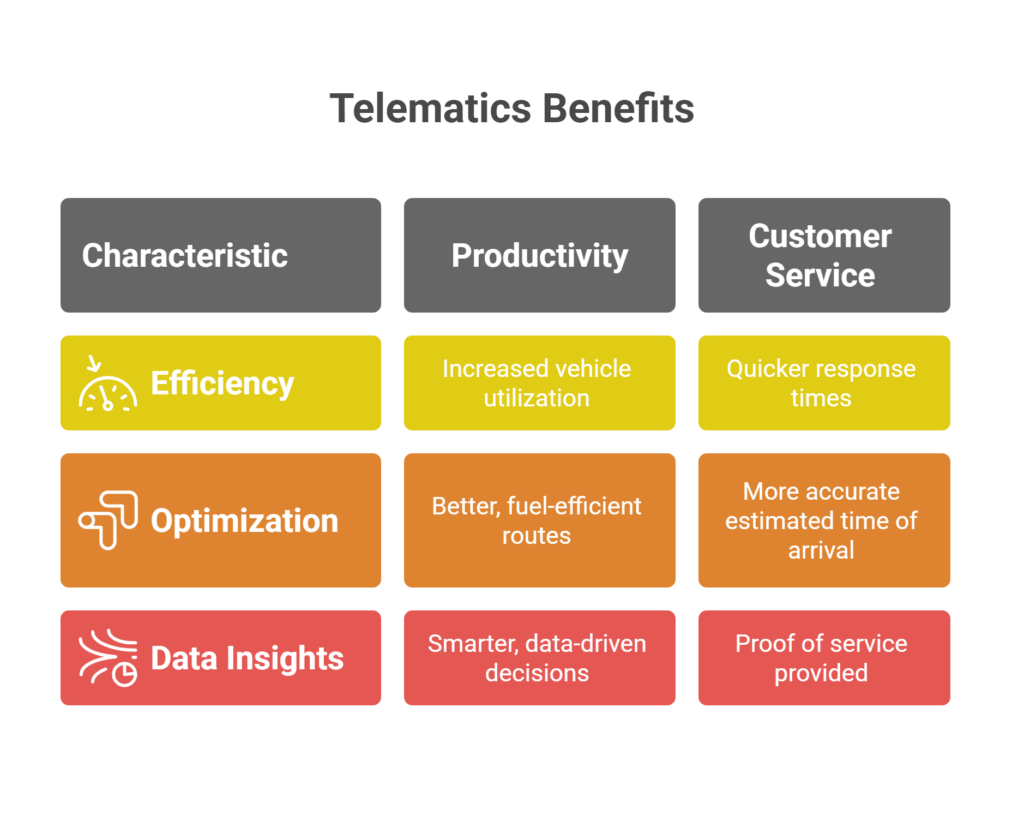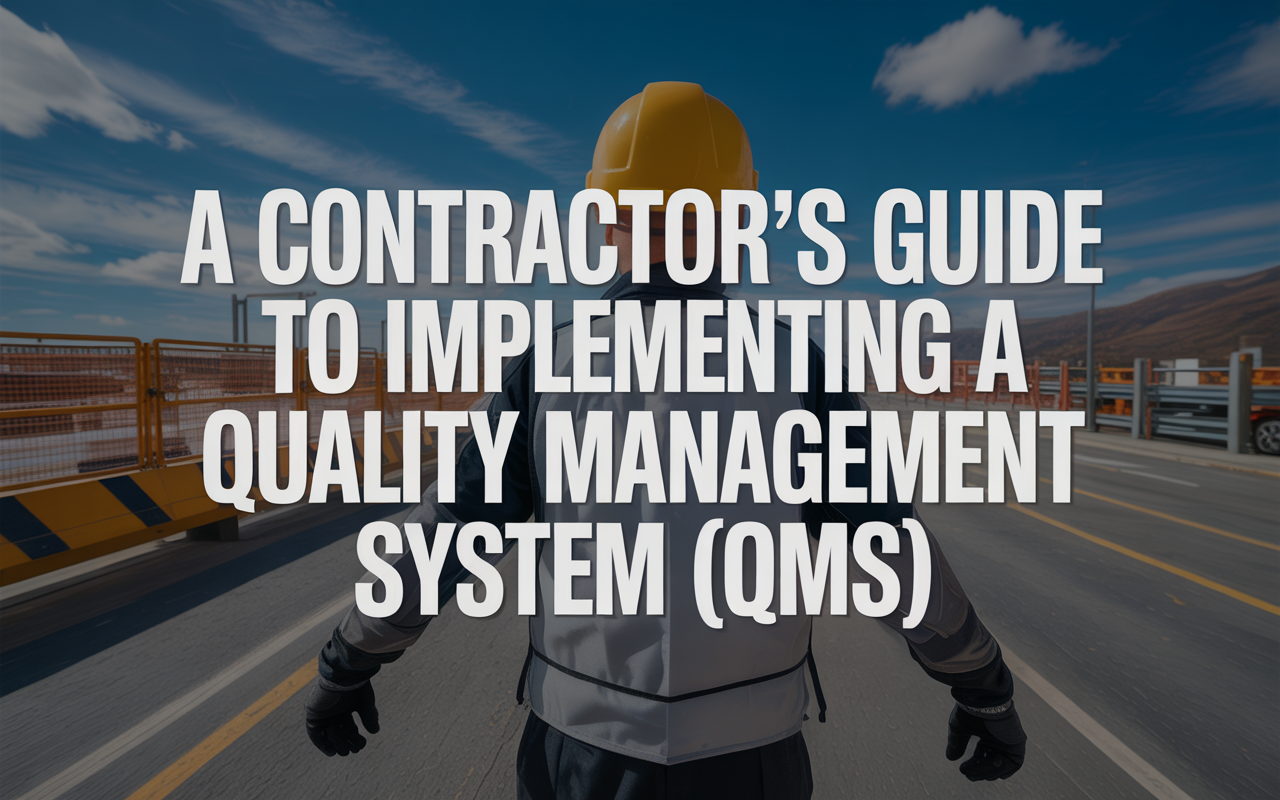Introduction
Skyrocketing fuel costs ⛽ and rising accident risks can silently cripple fleet operations—unless real-time data powers your decisions. Telematics isn’t just an upgrade for today’s commercial fleets; it’s a necessity for staying competitive and safe. Many managers still waste hours manually tracking vehicles and guessing at maintenance needs, but those days are over. This piece reveals how the right fleet telematics setup—like the platform from Nektar—can transform efficiency, cut costs, and keep you ahead of compliance challenges.
Here’s the core truth: smart telematics means fewer surprises, lower expenses, and peace of mind for fleet managers. You’ll walk away knowing: what telematics is (and isn’t), how it addresses major pain points, which features matter most, and how to choose a provider that scales with your business. What you need to grasp right now: operational gains are real, and delaying adoption leaves money and safety on the table.
What Is a Fleet Telematics Solution?
At its heart, a fleet telematics system is a powerful combination of technologies. Think of it as your fleet’s central nervous system. It primarily involves GPS tracking to know where your vehicles are, onboard diagnostics (OBD) to understand what’s happening under the hood, and wireless communication to send all this information back to you. These components work in harmony, creating a stream of valuable data.
“Meaning of Fleet Telematics: It combines GPS tracking, onboard diagnostics, and wireless communication to provide real-time data on vehicle location, behavior, and status.” -SimplyFleet
This data gives you a clear view of your vehicle locations, how your drivers are performing on the road, and the current health status of each vehicle in your fleet. As industry observers at SimplyFleet point out, this combination of GPS, diagnostics, and wireless tech provides real-time information crucial for modern fleet management, allowing for immediate understanding and response. It’s about having the right information at your fingertips when you need it most.
How Does Telematics Work in Fleet Management?
So, how does this all come together in practice? A small device, typically installed in each vehicle, gathers a wealth of data. This includes location coordinates, speed, engine performance metrics, braking patterns, and sometimes even in-cab video feeds. This information is then transmitted wirelessly, often via cellular or satellite networks, to a central server.
Once the data reaches the server, it’s processed and presented to fleet managers through a user-friendly interface, often a web-based dashboard or a mobile app, like the one offered by Nektar. This platform turns raw data into actionable insights. For example, as noted by DriveDifferent Blog, these systems can monitor a variety of data points in real time, from driver acceleration and braking to maintenance schedules and automatic collision notifications, allowing managers to make timely adjustments and improve operations.
“These solutions can track all kinds of data in real-time, including driver acceleration and braking patterns, maintenance schedules, and automatic collision notifications.” -DriveDifferent Blog
Key Benefits of Fleet Telematics Solutions
One of the most immediate advantages you’ll see is real-time vehicle tracking. Knowing exactly where your vehicles are at any given moment improves dispatching, helps with recovery in case of theft, and provides customers with accurate arrival times. This visibility alone can streamline your day-to-day operations immensely. Imagine being able to pinpoint the nearest vehicle to an urgent job or reroute a driver to avoid unexpected traffic. 🗺️
Beyond just location, these systems are champions at promoting fuel efficiency. By monitoring driving habits like speeding, harsh braking, and excessive idling, you can coach drivers towards more fuel-conscious behaviors. Optimized routing also plays a big part, ensuring vehicles take the shortest, most efficient paths. Many fleet managers also find that telematics helps slash fuel expenses and achieve quicker routes, leading to better overall productivity, a point often highlighted by experts like Motive.

Another huge plus is proactive vehicle maintenance. Instead of waiting for a breakdown, telematics can alert you to potential issues based on diagnostic trouble codes or scheduled servicing needs. This means fewer unexpected downtimes, longer vehicle life, and reduced repair costs. Better driver conduct, encouraged by monitoring and feedback, also leads to less wear and tear on vehicles and, most importantly, safer roads for everyone. 🛡️
“One of the most immediate benefits of fleet telematics is the ability to track vehicles in real time.” -SimplyFleet
“For fleet managers, the benefits of telematics include lower fuel costs, faster routes, and better productivity.” -Motive
Essential Features to Look For in a Fleet Telematics Solution
When you’re looking for a fleet telematics offering, certain features are non-negotiable for effective management. GPS tracking is fundamental; it’s the bedrock that provides visibility. Look for systems that offer accurate, real-time location updates. Driver behavior monitoring is another critical component. This includes tracking speed, acceleration, braking, and cornering to identify risky habits and areas for coaching.
Maintenance alerts, generated from diagnostic data or pre-set schedules, are also vital for keeping your fleet in top condition and avoiding costly repairs. As MiX by Powerfleet often emphasizes, harnessing GPS technology within telematics optimizes routes, cuts down on idle time, and refines overall logistics. Equally important are integration capabilities – the system should be able to connect with other business software you use, such as payroll or dispatch systems, for a seamless flow of information.
“By harnessing GPS technology, fleet telematics optimizes routes, reduces idle time, and enhances overall logistics.” -MiX by Powerfleet
Fleet Telematics for Safety and Compliance
Safety is paramount in any fleet operation, and telematics plays a massive role here. By monitoring driving styles, you can identify and address risky behaviors like speeding or harsh braking before they lead to accidents. Some systems even offer in-cab cameras and alerts that can provide immediate feedback to drivers or warn them of potential dangers like fatigue.
When it comes to compliance, telematics simplifies many processes. Automatic logging of Hours of Service (HOS) for drivers, for instance, removes manual paperwork and helps prevent violations. The data collected can also be invaluable for generating reports needed for inspections or insurance purposes. Industry voices, like those from MiX by Powerfleet, often describe fleet telematics, with its array of safety features, as a guardian of road safety and an aid for regulatory adherence. It helps ensure your operations meet all necessary standards.
“Fleet telematics, equipped with a myriad of safety features, emerges as a guardian of road safety and a facilitator of regulatory adherence.” -MiX by Powerfleet
Reducing Operational Costs Through Telematics
Let’s talk about the bottom line. 💰 A primary reason many businesses adopt telematics is to cut down operational expenses. Fuel is often one of the biggest costs, and telematics offers several ways to reduce it. By optimizing routes, you ensure vehicles aren’t wasting fuel on unnecessarily long journeys. Monitoring and curbing behaviors like excessive idling and aggressive driving also make a big impact on fuel consumption.
Preventative maintenance, triggered by telematics alerts, helps avoid expensive, unexpected breakdowns and extends the life of your vehicles. As SimplyFleet’s blog notes, telematics systems can help lower these costs by providing data on fuel usage and pinpointing areas for improvement, such as excessive idling or inefficient routes. Over time, these savings add up substantially, directly improving your profitability.
“Telematics systems can help reduce these costs by providing data on fuel consumption and identifying areas for improvement. For instance, telematics can highlight instances of excessive idling, inefficient routes, or aggressive driving, all of which contribute to higher fuel consumption.” -SimplyFleet
Optimizing Fleet Productivity and Customer Service
Beyond cost savings, telematics can supercharge your fleet’s productivity. With real-time visibility and data insights, you can make smarter decisions about vehicle utilization. This means getting more done with the same number of vehicles, or even potentially reducing your fleet size. Automated dispatching features can assign jobs to the nearest available driver, reducing travel time and improving response speed.
This improved efficiency naturally leads to better customer service. Quicker response times, more accurate ETAs, and proof of service all contribute to happier clients. The DriveDifferent Blog points out that productivity can be boosted by using collected data to map better, more fuel-efficient routes with less traffic, and by reassigning vehicles to cut down on downtimes and response times, which ultimately improves customer interactions. When your operations run like a well-oiled machine, your customers notice. 👍

“Productivity can be improved by using collected data to map better and more fuel-efficient routes with less traffic, and reassigning vehicles to reduce downtimes and response times to ultimately improve customer service.” -DriveDifferent Blog
Integration and Scalability: Choosing the Right Provider
Selecting the right telematics provider is a key step. You’ll want a system that can smoothly integrate with any existing software you rely on, like accounting, dispatch, or customer relationship management tools. This avoids data silos and ensures information flows freely across your business operations, creating a more unified and efficient workflow.
Think about your future growth too. A good telematics platform should be scalable, meaning it can easily accommodate an expanding fleet and evolving business needs without requiring a complete overhaul. Providers like Nektar understand this, offering platforms designed to grow with you, backed by reliable customer support to assist you every step of the way. They focus on providing a system that adapts to businesses of all sizes, ensuring you have the tools you need today and tomorrow.
Data Security and Privacy Concerns
With all the data being collected, security and privacy are understandably important. Reputable telematics providers take this very seriously. Look for vendors who employ robust security measures, including data encryption both in transit and at rest, secure servers, and strict access controls. They should also have clear policies on data ownership and usage, ensuring your sensitive fleet and driver information is protected and handled responsibly. Check for certifications or compliance with industry security standards.
Implementing Telematics: Steps for Success
Getting started with telematics doesn’t have to be complex. The first step is to clearly define your needs and goals. What problems are you trying to resolve? What improvements do you want to see? This will help you select a telematics offering with the right features for your business. Once you’ve chosen a provider, a typical rollout involves installing the devices in your vehicles and setting up the software platform.
Crucially, onboarding your drivers and other staff is key to success. Explain the benefits – not just for the company, but for them too (like improved safety and fairer workload distribution). Provide training on how the system works and how the data will be used. Regularly review the data, measure your return on investment (ROI) against your initial goals, and make adjustments to your strategies as needed to maximize the benefits.
Sustainability and Environmental Impact of Telematics
In an era where environmental consciousness is growing, telematics can also help your fleet become greener. ♻️ By promoting fuel-efficient driving, optimizing routes to reduce miles driven, and ensuring vehicles are well-maintained (which often means they run cleaner), telematics directly contributes to lowering your fleet’s carbon footprint. Reduced fuel consumption means fewer emissions, helping your business operate more sustainably.
Real-World Results: Telematics in Action
The impact of telematics isn’t just theoretical; businesses are seeing tangible results every day. Imagine a delivery company that slashes its fuel bill by 15% within six months by identifying and coaching drivers who frequently speed or idle excessively. Or think of a construction firm that reduces vehicle downtime by 20% thanks to predictive maintenance alerts, keeping projects on schedule and clients happy.
Companies using advanced platforms, like those offered by Nektar, often report significant improvements in driver safety scores, leading to fewer accidents and lower insurance premiums. They also benefit from streamlined compliance and the ability to provide better service to their customers through accurate tracking and communication. These are the kinds of outcomes that make investing in a quality telematics system a smart move.

Frequently Asked Questions
- What is fleet telematics? Fleet telematics uses technology, including GPS and onboard diagnostics, to collect and send real-time data about vehicles and driver activity. This information helps manage fleet operations more effectively.
- How does a telematics system improve safety? It improves safety by monitoring driver conduct (like speeding or harsh braking), providing real-time alerts for risky actions, offering tools for driver coaching, and helping with quick incident reporting and analysis.
- Can telematics help reduce operating costs? Absolutely! It helps cut costs by optimizing routes for fuel savings, reducing idling time, enabling proactive vehicle maintenance to prevent expensive breakdowns, and often leading to lower insurance premiums due to improved safety records.
- Is telematics data secure? Reputable telematics providers use strong security measures like data encryption, secure servers, and access controls to protect your sensitive fleet data from unauthorized access.
- How quickly can a business start seeing results from telematics? Many businesses begin to see a return on investment within a few months. Benefits like improved driver conduct and initial fuel savings can appear quite quickly, while others, like reduced maintenance costs, accrue over time.
Conclusion
Fleet telematics systems are fundamentally changing how businesses manage their vehicles, people, and overall profitability. Data-driven operations replace guesswork with precision, while real-time insights allow for proactive problem addressing and continuous improvement. Nektar delivers an adaptable, secure platform that gives fleet managers the control and confidence they need to maximize every mile and protect their investment.
Ready to stop losing money to inefficiency and compliance headaches? ➡️ Get in touch with Nektar to see how our fleet telematics offering can transform your fleet’s performance, cut costs, and boost driver safety.
Key Takeaways:
- Fleet telematics delivers actionable data on vehicle and driver performance in real time.
- Major benefits include improved efficiency, lower costs, better compliance, and greater safety outcomes.
- Choosing the right provider means prioritizing integration, scalability, security, and customer support—qualities Nektar specializes in.
- Fast, measurable ROI is possible when businesses fully embrace telematics technology.



